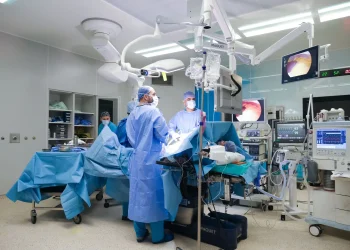In recent years, 3D imaging technology has revolutionized the field of plastic surgery. With its ability to provide highly detailed, realistic images, it has become an essential tool for surgeons in planning procedures, improving patient outcomes, and minimizing risks. From facial reconstruction to body contouring, 3D imaging has paved the way for more precise and personalized treatments. This article explores the vital role of 3D imaging in modern plastic surgery, highlighting its applications, benefits, and impact on patient satisfaction.
What is 3D Imaging in Plastic Surgery?
3D imaging technology involves capturing three-dimensional images of a patient’s anatomy. It provides a comprehensive and accurate representation of the body’s structure, which is invaluable in surgical planning. Unlike traditional 2D imaging, 3D imaging offers a more detailed view, allowing surgeons to analyze the area of interest from various angles. This enhanced visibility aids in making informed decisions about surgical approaches, resulting in better precision during procedures.
Applications of 3D Imaging in Plastic Surgery
1. Facial Reconstruction and Aesthetic Surgery
One of the most notable applications of 3D imaging in plastic surgery is in facial reconstruction and aesthetic enhancements. Surgeons use 3D scans to evaluate a patient’s facial features and determine the most suitable course of action. Whether it’s a rhinoplasty, facelift, or chin augmentation, the ability to visualize the face in three dimensions ensures that changes are made harmoniously, maintaining balance and proportion.
Before performing a procedure, surgeons can also use 3D imaging to create virtual simulations. These simulations show the expected results of a surgery, helping both the patient and the surgeon visualize the outcome. This is particularly beneficial in facial aesthetics, where even subtle adjustments can make a significant difference in the overall appearance.
2. Body Contouring and Liposuction
3D imaging is also highly effective in body contouring procedures, such as liposuction and tummy tucks. By capturing detailed images of the body, surgeons can assess fat distribution, muscle structure, and skin elasticity. This allows them to plan surgeries that result in smoother, more natural-looking outcomes. The detailed images also help in determining the amount of fat to be removed, reducing the likelihood of over-correction or uneven results.
Furthermore, 3D imaging allows surgeons to track changes in a patient’s body shape before and after surgery, providing an invaluable tool for monitoring progress and ensuring satisfaction.
Also, read more Magazine Valley.
3. Breast Augmentation and Reconstruction
In breast augmentation and reconstruction, 3D imaging plays a critical role in helping surgeons determine the ideal implant size, shape, and placement. Through the use of advanced 3D scanning, the surgeon can accurately measure breast tissue and chest wall structure, ensuring that the chosen implants complement the patient’s body.
By simulating various implant options, surgeons can show patients how different sizes and shapes will look on their body, which helps them make a more informed decision. This technology has led to increased satisfaction, as patients feel more confident about the outcome of their surgery.
4. Pre-Operative Planning and Simulation
For complex procedures, such as reconstructive surgery following trauma or mastectomies, 3D imaging enables surgeons to plan with precision. By creating a digital model of the patient’s anatomy, surgeons can identify the best surgical techniques and strategies for reconstruction. They can also simulate the surgery beforehand, refining their approach to minimize risks and improve the chances of a successful outcome.
Additionally, this technology helps in anticipating potential challenges that may arise during surgery, such as complications related to tissue or bone structure, allowing for better-prepared surgeons and fewer surprises during the operation.
The Benefits of 3D Imaging in Plastic Surgery
1. Improved Surgical Accuracy
The most significant benefit of 3D imaging is its ability to improve the accuracy of plastic surgery procedures. Surgeons can plan the surgery in detail, considering all aspects of the patient’s anatomy. With a precise roadmap, they can make more accurate incisions, position implants correctly, and sculpt tissue more effectively, all of which lead to better outcomes.
2. Enhanced Patient Communication and Satisfaction
Patients are often anxious about the results of their surgery, especially when it comes to aesthetic procedures. 3D imaging helps to ease these concerns by providing realistic simulations of the expected outcome. This not only helps patients set realistic expectations but also fosters trust between the patient and surgeon. With the use of 3D simulations, patients can feel more confident in their decisions and more satisfied with their results.
Moreover, the ability to see a detailed, 3D view of the changes helps patients communicate their desires more effectively, ensuring that the surgeon understands their vision.
3. Personalized Treatment Plans
Every patient is unique, and so are their anatomical structures. 3D imaging enables surgeons to create personalized treatment plans tailored to the patient’s specific needs. By assessing the body in three dimensions, surgeons can account for asymmetries, tissue quality, and other factors that may affect the outcome of the surgery. This customization leads to results that are more natural and in line with the patient’s desires.
4. Reduction in Surgical Risks
With 3D imaging, surgeons can plan surgeries more precisely, reducing the chances of errors. The ability to anticipate challenges and visualize the anatomy in detail decreases the likelihood of complications during surgery. This not only helps in reducing the risks for patients but also leads to faster recovery times and fewer revisions after surgery.
The Future of 3D Imaging in Plastic Surgery
As technology continues to evolve, the role of 3D imaging in plastic surgery will become even more prominent. Advances in augmented reality (AR) and virtual reality (VR) may enable surgeons to interact with 3D models in real-time during surgery, enhancing their ability to make precise adjustments as they work. These developments will further refine surgical techniques, leading to even better outcomes and a higher level of patient satisfaction.
For individuals considering surgery, consulting with a skilled plastic surgery PA can provide more information on the role of 3D imaging and how it can help achieve the best results.
Conclusion
3D imaging has become a game-changer in plastic surgery, offering benefits that range from improved surgical precision to enhanced patient satisfaction. By allowing for detailed pre-operative planning, visualizations, and simulations, 3D imaging ensures that patients achieve their desired results with minimal risks. As technology continues to advance, 3D imaging will only grow in importance, shaping the future of plastic surgery and improving outcomes for countless patients worldwide.























